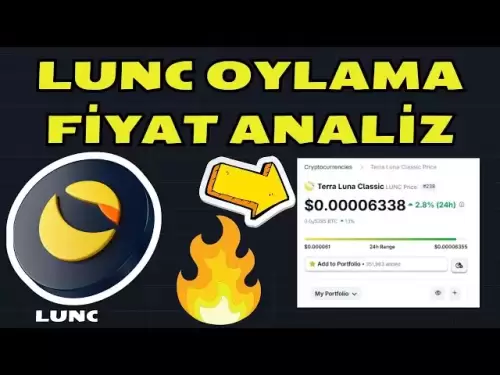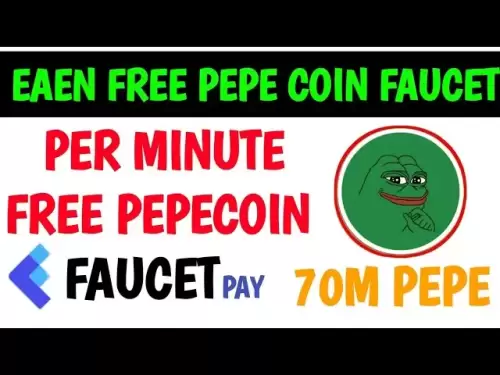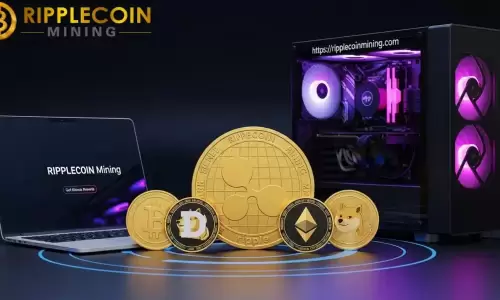 |
|
 |
|
 |
|
 |
|
 |
|
 |
|
 |
|
 |
|
 |
|
 |
|
 |
|
 |
|
 |
|
 |
|
 |
|
最後にアイコン(ICX)が見出しを作ることでしたが、TronやFilecoinと競合してBittorrentを購入していたとき、ICOバブルの高さでした
![]()
At the height of the ICO bubble, ICON (ICX) was making headlines for its high-profile bidding war with Tron and Filecoin to buy BitTorrent.
ICOバブルの高さで、アイコン(ICX)は、トロンとファイルコインとの有名な入札戦争の見出しを作って、BitTorrentを購入していました。
However, despite early promise as the “Korean Ethereum,” ICON struggled to maintain relevance amid fierce competition and a changing narrative.
しかし、「韓国のイーサリアム」としての初期の約束にもかかわらず、アイコンは激しい競争と変化する物語の中で関連性を維持するのに苦労しました。
Now, the project is back in the news as it has rebranded to SODAX and is migrating its entire DeFi infrastructure from its own Layer-1 blockchain to Sonic, an EVM-compatible network known for high-speed, low-cost transactions.
現在、このプロジェクトは、ソダックスにブランド変更され、独自のレイヤー1ブロックチェーンから高速、低コストのトランザクションで知られるEVM互換ネットワークであるSonicに、Defiインフラストラクチャ全体を移行しているため、ニュースに戻っています。
Sonic itself is a rebranded Fantom, which began in 2024.
ソニック自体は、2024年に始まったブランドのファントムです。
In an interview with CoinDesk, ICON founder Min Kim explained the logic behind shifting from running an independent blockchain to effectively outsourcing that part of the operation to Sonic’s Layer-1 infrastructure.
Coindeskとのインタビューで、Iconの創設者であるMin Kimは、独立したブロックチェーンの実行からSonicのLayer-1インフラストラクチャへの操作の一部を効果的にアウトソーシングするためのシフトの背後にあるロジックを説明しました。
“Back in 2017, we had to build our own Layer-1 because there wasn’t any other infrastructure available,” Kim said. “Today, buying and maintaining your own Layer-1 property just doesn't make sense anymore because there are cheaper, better options available.”
「2017年には、他のインフラストラクチャが利用できなかったため、独自のレイヤー1を構築する必要がありました」とキムは言いました。 「今日、より安価でより良いオプションが利用可能であるため、独自のLayer-1プロパティを購入して維持することはもう意味がありません。」
According to Kim, outsourcing infrastructure to Sonic allows his team to streamline expenses and sharpen their strategic focus on DeFi products.
Kimによると、Sonicへのアウトソーシングインフラストラクチャにより、彼のチームは費用を合理化し、Defi製品に戦略的に焦点を当てることができます。
“It significantly cuts our operating expenses by millions of dollars,” Kim told CoinDesk. “There's less inflation for our tokens, and all of this just makes financial sense.”
「それは私たちの営業費用を数百万ドル削減します」とキムはCoindeskに語った。 「トークンにはインフレが少なく、これらすべてが経済的に理にかなっています。」
This isn't all that dissimilar from the manufacturing world. Foxconn and Taiwan Semiconductor are billion-dollar companies because firms like Apple and Nvidia don't have their own factories.
これは、製造業の世界とはそれほど似ていません。 FoxconnとTaiwan Semiconductorは、AppleやNvidiaなどの企業が独自の工場を持っていないため、10億ドルの企業です。
Similarly, ICON no longer needs to bear the high fixed costs and risks associated with running an entire blockchain.
同様に、アイコンは、ブロックチェーン全体を実行することに関連する高い固定コストとリスクを負担する必要がなくなりました。
“Maintaining a decentralized network with validators around the world is a huge undertaking,” Kim explained. “We have eight years of experience running our own Layer-1. It's tedious, costly, and very stressful. Outsourcing to Sonic allows us to focus on innovation and delivering products that people actually want.”
「世界中のバリデーターと分散型ネットワークを維持することは大きな取り組みです」とキムは説明しました。 「私たちは独自のレイヤー-1を実行している8年の経験があります。それは退屈で、費用がかかり、非常にストレスがかかります。ソニックへのアウトソーシングは、人々が実際に望んでいる革新と配信に集中することができます。」
Kim also highlighted the risk reduction benefits, noting that ICON’s DeFi layer can remain unaffected by infrastructure issues at Sonic, creating a valuable risk separation.
キムはまた、リスク削減の利点を強調し、Iconのdefi層はSonicのインフラストラクチャの問題の影響を受けず、貴重なリスク分離を生み出す可能性があることに注目しました。
“There's de-risking,” he explained. “If Sonic gets hacked, obviously it’s bad, but it’s not directly our fault. Sonic focuses solely on security and validator infrastructure, so we and other DeFi builders can focus on creating applications closer to end-users.”
「リラックスがあります」と彼は説明した。 「ソニックがハッキングされた場合、明らかに悪いことですが、それは直接私たちのせいではありません。ソニックはセキュリティとバリターターのインフラストラクチャのみに焦点を当てているため、私たちと他のdefiビルダーはエンドユーザーに近いアプリケーションの作成に焦点を当てることができます。」
The strategy comes as ICON seeks to reinvent itself amid diminished market influence. Once a top 20 cryptocurrency, ICON’s ICX token crashed nearly 99% from its all-time highs by late 2018, and has since not recovered, according to CoinGecko data, as investors moved toward platforms better able to capitalize on the rise of DeFi and NFTs.
この戦略は、アイコンが市場の影響が低下した中でそれ自体を再発明しようとしているためです。かつてトップ20の暗号通貨であったICONのICXトークンは、2018年後半までに史上最高から99%近くクラッシュし、Coingeckoのデータによると、投資家がDefiとNFTSの台頭をよりよく資本化できるプラットフォームに移行したため、回復していません。
“Layer-1 infrastructure just doesn't make sense for most projects,” Kim argued. “Many underestimated the effort, the capital expenses involved. There's been a misguided premium investors placed on Layer-1 projects, thinking an ecosystem would naturally build itself. But that’s costly and rarely sustainable.”
「レイヤー-1インフラストラクチャは、ほとんどのプロジェクトでは意味がありません」とキムは主張しました。 「多くの人が努力を過小評価していました。関連する資本費用。レイヤー-1プロジェクトに課せられた誤ったプレミアム投資家がいました。エコシステムは自然にそれ自体を構築すると考えています。しかし、それは費用がかかり、ほとんど持続可能ではありません。」
Now rebranded as SODAX and focused on cross-chain liquidity products, the project is migrating ICX tokens to a new token, SODA. While Sonic and SODAX’s tokens remain distinct, Kim emphasized that Sonic’s fee-monetization mechanisms will channel transaction fees back to SODA holders.
現在、ソダックスとしてブランド変更され、クロスチェーンの流動性製品に焦点を当てているこのプロジェクトは、ICXトークンを新しいトークンであるソーダに移行しています。ソニックとソダックスのトークンは依然として明確なままですが、キムはソニックの有料化メカニズムが取引手数料をソーダ保有者に戻すことを強調しました。
“Sonic allows 90% of transaction fees to flow back to SODA token holders,” Kim noted, underscoring the economic incentive of their strategic pivot.
「Sonicは、取引手数料の90%がソーダトークンホルダーに戻ることを許可しています」と、キムは戦略的ピボットの経済的インセンティブを強調していると述べました。
Asked if this outsourcing model represents a broader trend, Kim predicted that many projects currently running Layer-1s will likely reconsider as market cycles shift.
このアウトソーシングモデルがより広範な傾向を表しているかどうかを尋ねられたキムは、現在レイヤー-1を実行している多くのプロジェクトが市場サイクルが変化するにつれて再考する可能性が高いと予測しました。
“Ethereum and Solana are great examples as they’re fully focused on validators and network security," he said. "We’re at the forefront of reversing the trend of launching your own Layer-1s. It’s just not viable for most projects long-term.”
「イーサリアムとソラナは、バリデーターとネットワークセキュリティに完全に焦点を合わせているため、素晴らしい例です」と彼は言いました。 「私たちは、独自のLayer-1を発売する傾向を逆転させる最前線にいます。ほとんどのプロジェクトでは長期にわたって実行可能ではありません。」
As the era of premium valuations for proprietary Layer-1 platforms ends, more projects, Kim said, are going to just focus on the product and not the infrastructure with ICON – now SODAX – leading the way on this.
専有レイヤー1プラットフォームのプレミアム評価の時代が終了すると、より多くのプロジェクトは、アイコンを備えたインフラストラクチャ(現在はソダックス)ではなく、製品に焦点を合わせていると言いました。
“We’re going back to basics, lowering our costs, streamlining operations, and doubling down on what we originally wanted to do: put financial products directly into people’s hands.”
「私たちは基本に戻り、コストを削減し、運用を合理化し、当初のやりたかったことを倍増します。金融商品を人々の手に直接入れます。」
免責事項:info@kdj.com
提供される情報は取引に関するアドバイスではありません。 kdj.com は、この記事で提供される情報に基づいて行われた投資に対して一切の責任を負いません。暗号通貨は変動性が高いため、十分な調査を行った上で慎重に投資することを強くお勧めします。
このウェブサイトで使用されているコンテンツが著作権を侵害していると思われる場合は、直ちに当社 (info@kdj.com) までご連絡ください。速やかに削除させていただきます。





























































